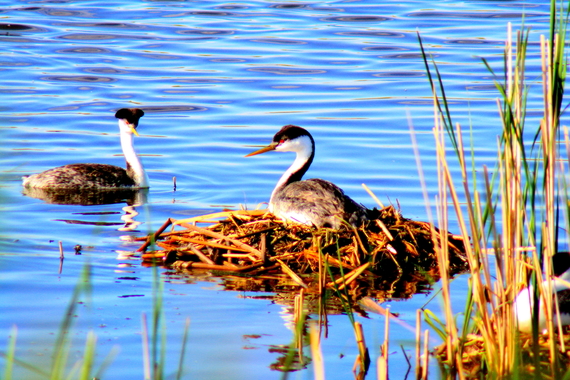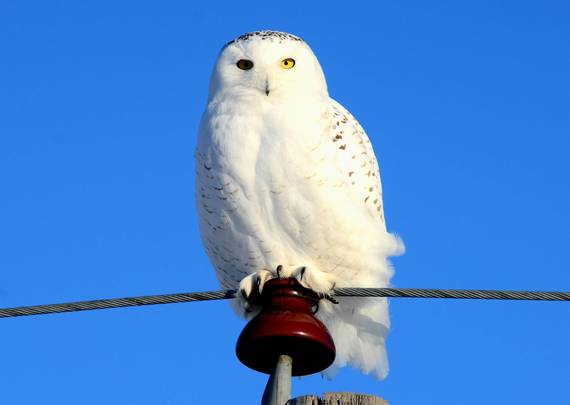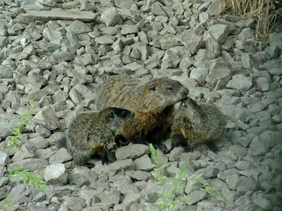
World Wetlands Day
February 2 marks World Wetlands Day. What’s a wetland anyway? A wetland is pretty much what it sounds like: an area of land that’s wet (meaning soil is saturated with or covered by water) for at least part of the year. Some wetlands are seasonal and others are wet year-round, depending upon water levels. Examples of wetlands include prairie potholes, marshes, swamps, bogs, and estuaries. Wetlands can contain freshwater, saltwater, or brackish water (a mix of fresh- and saltwater). They may be tidal (ebbing and flowing) or non-tidal. Wetlands can be found in urban, suburban, or rural areas across the world.
Regrettably, over half of America’s wetlands have been lost since 1780. While these habitats were once underappreciated and misunderstood, we now know that conserving, restoring, and enhancing wetlands is important for people and wildlife. For instance, wetlands provide high-quality outdoor recreation opportunities such as fishing, hunting, birding, and boating.
In the central and western United States, the Prairie Pothole Region spans portions of North Dakota, South Dakota, Minnesota, Iowa, and Montana. It’s known as America’s “Duck Factory” and serves as a nursery for millions of waterfowl. The region’s grassland and wetland habitats also support migratory birds and other native wildlife, in addition filtering groundwater, controlling flooding and runoff, and capturing carbon from the atmosphere. Wetland habitats further support social, cultural, aesthetic, ecological, and economic benefits for people and local communities.
In addition to over 500 national wildlife refuges across the United States, there are 38 wetland management districts, composed of waterfowl production areas. These lesser-known public lands and waters in the Prairie Pothole Region support wildlife and conserve wetland habitats for current and future generations.
One way you can support wetlands and wildlife is by purchasing a Federal Duck Stamp; 98 cents of every dollar goes to protecting wetlands as part of the National Wildlife Refuge System. You can also learn about wetlands in your local community, educate others about wetland conservation, or visit wetlands of international importance at national wildlife refuges across the United States.
Superb Owls Across the United States

Snowy Owl Irruption Provides a Rare Glimpse of Elusive Arctic Birds
It’s Super Bowl LII this Sunday, but why not also celebrate “superb owls”? These birds of prey are skilled and tenacious hunters that keep rodent populations in check. North America is home to 19 owl species, while there are over 200 owl species worldwide. Not all owls hunt at night. Some, like the burrowing owl, short-eared owl, and snowy owl are regularly seen during daylight hours.
Indeed, elusive snowy owls have been in the spotlight recently for visiting many parts of the United States this winter, likely due to a cyclical “irruption;” a population boom of snowy owls (resulting from an abundance of food in the north during summer breeding) causes young, ravenous raptors to travel further south in winter. Snowy owls breed in the northern Arctic, so their winter descent into the lower 48 states is exciting news for birders and wildlife watchers. Recent research by biologists, incorporating citizen science data, reveals snowy owl numbers are much smaller than originally thought; the nomadic birds have traditionally been difficult to track, but new technologies are helping scientists better estimate snowy owl migration, movement, and distribution.
Male snowy owls tend to be nearly all-white, while female snowy owls have dark bars running across their otherwise white plumage. These owls can weather a chilly climate in part due to insulation provided by their fluffy feathers, which even cover the owls’ feet like slippers. These powerful predators are North America’s heaviest owl species. Explore additional facts about snowy owls, and the many other outstanding owl species found on public lands across the United States.
Did You Know?
 |
It’s Groundhog DayWhether you’re hoping for six more weeks of winter or an early spring, there’s plenty to discover about this fuzzy eastern mammal.The groundhog is also known as a woodchuck or a whistle-pig. It’s a rodent and member of the squirrel family, along with chipmunks, marmots, prairie dogs, and (of course) squirrels. Groundhogs are active during the day, eat a variety of plants (although not wood), and hibernate in burrows during winter. Explore the history of Groundhog Day (and an analysis of the groundhog’s forecast accuracy) from the National Centers for Environmental Information, and discover more about the groundhog’s diet and distribution from The Smithsonian’s National Museum of Natural History. Photo: A groundhog mother with two young by Veronica Kelly/USFWS |




